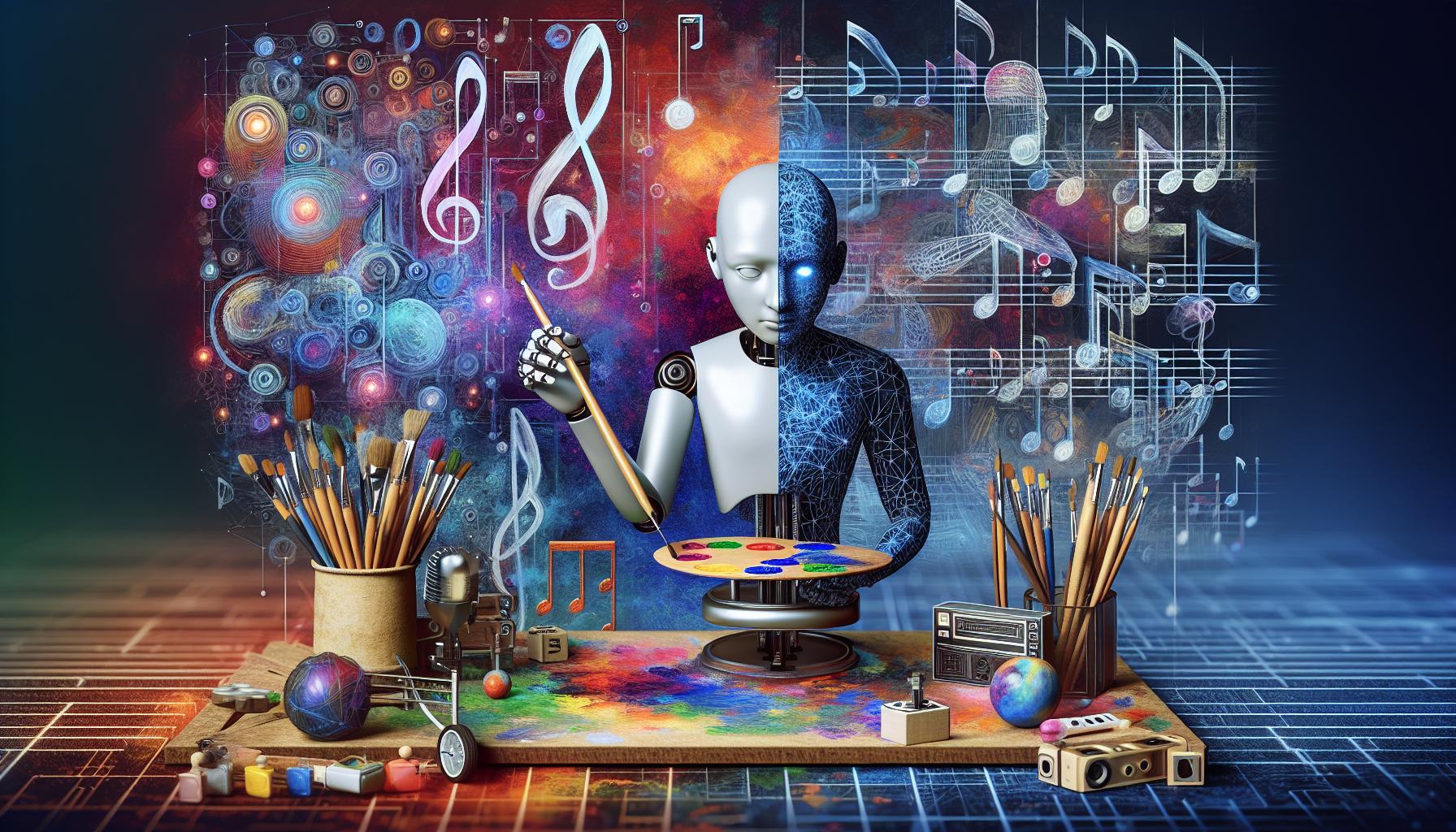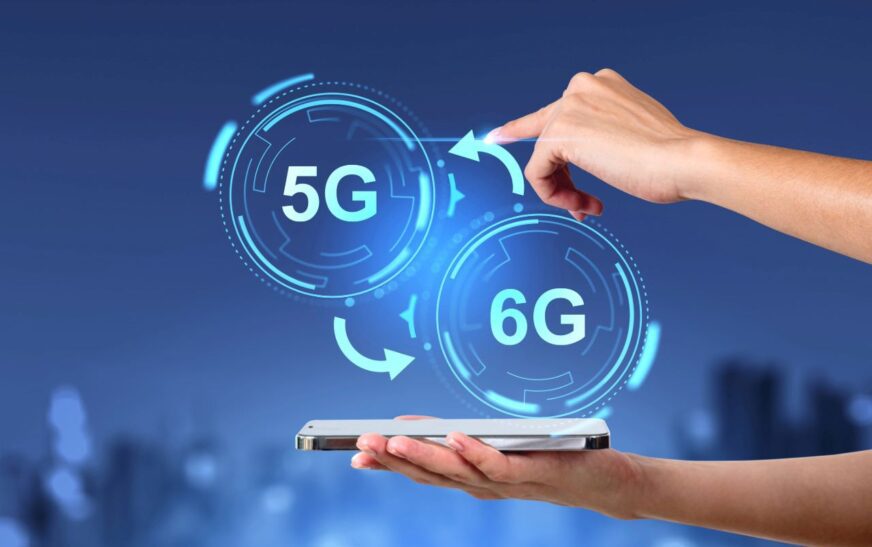Artificial intelligence (AI) is rapidly reshaping a variety of fields, including the creative industries. Traditionally dominated by human creativity, these fields are undergoing a major transformation as AI technology enhances and redefines artistic processes. From art generation and composition to story writing and graphic design, AI is becoming an essential tool for artists, designers, and content creators. This paper explores the impact of AI on the creative industries and discusses its applications, benefits, challenges, and the future of creativity.
1. understanding ai in the creative industries

AI encompasses a variety of technologies, including machine learning, natural language processing, and computer vision. In the creative field, AI systems can analyze patterns, generate content, and assist human creators in a variety of ways. Key applications of AI in the creative industries include
Generative art: AI algorithms can create visual artworks by learning from existing artworks and generating new images that mimic a particular style or theme.
Composition: AI tools can compose original music by analyzing patterns in existing songs.
Content creation: AI can generate written content, from news articles to marketing copy, using natural language processing to streamline the writing process for creators.
Design support: AI can suggest layouts, color palettes, and design elements to improve the work efficiency of graphic designers and marketers.
2. use of ai in the creative industry

2.1. visual arts
In the visual arts, AI is being used to create unique works of art that defy traditional notions of creativity; tools such as DeepArt and DALL-E utilize neural networks to transform photographs into artwork or generate images from text descriptions. Artists can collaborate with AI systems and use them as collaborators to push the boundaries of their work.
Case Study “Edmond de Belamy,” an AI-based artwork by Paris-based collective Obvious, sold at auction for $432,500. The sale raised questions about authorship and the role of AI in the art world.
2.2. music industry
AI is making waves in the music industry by composing original songs, generating melodies, and even producing entire albums. platforms such as AIVA (Artificial Intelligence Virtual Artist) and Amper Music, allowing musicians to collaborate with AI to create unique songs tailored to specific genres and styles.
Impact: AI-generated music can be used for a variety of applications, including background music for movies, video games, and advertising, streamlining the production process.
2.3. writing and journalism
AI writing tools, such as OpenAI’s GPT-3, are revolutionizing content creation. These systems can generate articles, blogs, and marketing copy, helping writers overcome creative blocks and improve productivity.
Example Some news organizations are using AI to generate real-time reports on sporting events and financial news to efficiently deliver timely content.
2.4. film and animation
The film industry uses AI in a variety of settings, from script analysis and storyboarding to special effects and animation AI algorithms can analyze audience preferences and predict box office success, helping producers make informed decisions.
Innovation AI tools like Runway ML make it easier for filmmakers to create visual effects and animation, democratizing access to advanced production techniques.
3. benefits of ai in the creative industries

The integration of AI into the creative sector offers several benefits:
3.1. increased efficiency
AI tools can streamline various creative processes, allowing artists and creators to focus on more advanced concepts and ideas rather than repetitive tasks. This efficiency can speed up the completion of projects and allow more time for experimentation.
3.2. Enhanced Collaboration
As creative partners, AIs can provide artists with new perspectives and ideas; by collaborating with AIs, creators can explore uncharted territory and push the boundaries of their art.
3.3. accessibility
AI-powered tools can make the creative process more accessible to individuals with limited artistic skills. For example, non-designers can use AI-driven design platforms to create professional-quality graphics and marketing materials.
3.4. personalization
AI can analyze audience preferences and adjust creative content accordingly. This personalization improves user engagement and satisfaction, leading to better results for companies and creators.
4. challenges and concerns
Despite its benefits, the integration of AI into the creative industry also raises several challenges:
4.1. authenticity and originality
The use of AI in creativity raises issues of authenticity and originality. If machines produce art or music, the very definition of creativity may need to be reevaluated: who owns the rights to AI-generated content, and how do we evaluate human creativity versus machine creativity?
4.2. job replacement
As the capabilities of AI tools increase, there is concern about job replacement in creative roles; while AI can increase efficiency, it also has the potential to replace some tasks traditionally performed by humans, leading to concerns about job loss in the industry.
4.3. quality control
AI-generated content may lack the emotional depth and nuance that human creators bring to their work; ensuring the quality and relevance of AI-generated content is a serious concern, especially in areas where human experience and creativity are paramount.
4.4. ethical considerations
The use of AI in the creative industries raises ethical issues related to copyright infringement, data privacy, and algorithmic decision bias. ensuring that AI systems operate transparently and fairly is essential to maintaining trust in the creative process 5. the future of AI in the creative industries
5. the future of ai in the creative industries
The future of AI in the creative industries will be characterized by ongoing collaboration between humans and machines. Several trends are expected to shape this landscape:
5.1. evolution of the role of the creator
As AI is integrated into the creative workflow, the role of artists and designers may evolve. Creators will increasingly focus on high-level conceptualization, curation, and storytelling, while AI will handle routine tasks and data analysis.
5.2. interdisciplinary collaboration
The convergence of technology and creativity will foster interdisciplinary collaboration. Artists, technologists, and data scientists will work together to create innovative solutions that integrate art and technology.
5.3. augment creativity
AI augments human creativity and allows artists to explore new ideas and push boundaries. Collaboration between humans and AI will lead to unique artistic expression that combines the best of both worlds.
5.4. continued innovation
As AI technology advances, we can expect further innovation in creative tools and applications. From virtual reality experiences to AI-generated immersive installations, the possibilities for creative expression will continue to expand.
Conclusion
Artificial intelligence is undeniably transforming the creative industries, providing new tools and opportunities for artists, musicians, writers, and designers. While challenges related to authenticity, job mobility, and ethical considerations remain, the potential benefits of AI for creativity and productivity are significant.
As we embrace the future of AI in the creative field, it is imperative that we overcome these challenges in a thoughtful and responsible manner. By fostering human-machine collaboration, we can harness the power of AI to unlock new levels of creativity and innovation. The relationship between technology and creativity is evolving, and the future holds exciting possibilities for artists and creators. In this dynamic context, the fusion of human ingenuity and artificial intelligence promises to redefine the boundaries of artistic expression.










